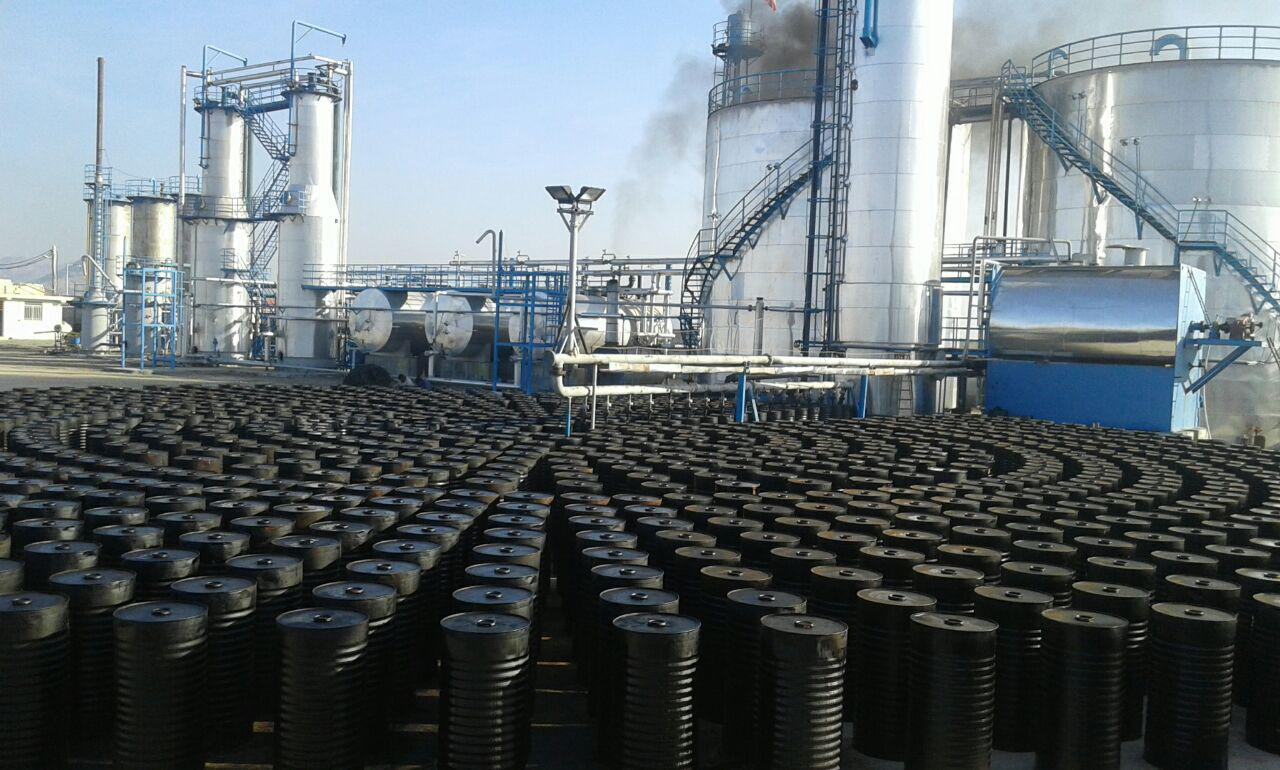Familiarity with bitumen and its production processes
Bitumen, a hydrocarbon compound with a dark brown-black color, in solid, semi-solid or viscous forms, with an adhesive property of natural or refined origin, mainly containing high molecular weight hydrocarbons. It is completely soluble in carbon disulfide (CS2), trichloroethylene (C2HCl3) and xylene (C6H4 (CH3) 2). The most common and widely used type of bitumen is petroleum bitumen, which is a physically homogeneous substance and a chemically heterogeneous mixture of different chemical compounds. This hydrocarbon mixture generally contains 90% of carbon and hydrogen atoms and the rest, nitrogen, sulfur and oxygen and small amounts of nickel, iron, magnesium, etc. Bitumen is behaviorally a substance that does not behave like an elastic substance or a viscous substance at ambient temperature, but the behavior of bitumen includes a combination of these two states, its mean viscoelastic behavior.
Bitumen production processes
The feed of bitumen production units, the remains of the distillation tower are vacuum bottles of refineries. Although the bitumen obtained from the vacuum tower can be used directly, but sometimes the bitumen output from the vacuum tower does not have the appropriate physical properties and its properties must be modified, the most important of which is blowing air It is bitumen.
Bitumen production processes, depending on the feed conditions and product specifications, are:
Aeration process
Blending and mixing process in tanks
Aeration process
Aeration method is used when the raw material of bitumen (feed) does not have the expected properties or in other words is softer than desired (has a lower viscosity). It has a very high degree of penetration of 400-300 tenths of a millimeter. This product has low asphalt and cannot be used for road construction in tropical and temperate regions. In order to be able to convert this bitumen residue into bitumen with suitable physical properties, heavy molecules such as asphaltene must be increased during the process., Products with modified properties are produced (harder bitumen and less heat sensitivity). This process is sometimes called Asphalt Oxidation and its product is called Oxidized Asphalt, but the terms Air Blowing and Air Blowing Asphalt are more appropriate. Because in this process, polymerization and dehydrogenation are done and oxygen will not enter the aeration product except in very small amounts. In this process, some of the oils turn into resins and some of the resins turn into asphaltene (at excessive heat, the bitumen turns into coal and steam). These changes result in a gel-like, rubber-like colloidal structure, in other words, its thermal sensitivity is reduced. Mesh pipes are used as a distributor to distribute air (creating large bubbles) at the end of the reactor. The air used in the reactor is supplied by air compressors that inject compressed air at a temperature of about 120 ° C from the bottom into the reactor, which contains molten bitumen. During the aeration process, air passes through the bitumen and the oxidation process takes place, which is an exothermic process that improves the physical properties of the bitumen. The oxidation process inside the reactor, based on temperature changes and the amount of aeration, converts the feed into various grades of bitumen. The air bubbles rise, carrying lighter bitumen compounds. The reason for air entering from the top of the tower is that if the air flow is cut off for any reason, the materials inside the tower will not enter the air line. The flow of vapor leaving the reactor then enters a vertical separator (Knock Out Drum) to separate the droplets. The vapors leaving the separator are then transferred to the incinerator. In this furnace, exhaust fumes are burned in order to lighten heavy and dangerous gases and prevent their release into the atmosphere. The separated liquid is drained by a line to the drainage pool or barrel next to the KO Drum. At the top of the tower is a rupture disk (Rupture Disk) which is torn when the liquid level or pressure rises and the contents of the tower are emptied into a pit. The produced bitumen after pumping is used for initial preheating of the input feed to the unit in order to send it to the storage tanks and then it is sent to the product storage tanks. It is worth noting that the secondary preheating of the feed is done using a transducer whose hot fluid is hot oil. To name the blown bitumen from left to right after the letter R, first write the degree of softness in degrees Celsius and then the degree of permeability in units of tenths of a millimeter.
Blending and mixing process
In this method, the characteristics of the crude oil entering the refinery upstream of the unit or the conditions of the distillation towers (atmospheric and vacuum) are such that the Vacuum Bottom outlet produces bitumen with a suitable degree of penetration. In this case, the viscosity or other properties of the bitumen are adjusted using the process of mixing with additives or solvents. Over time and according to the food situation and market demand, different bitumen materials must be mixed together and turned into the desired bitumen. If the additives do not have a large difference in viscosity, they can be converted to bitumen through normal mixing or in combination with partial aeration operations. If the difference in viscosity of the mixing material is large, then the use of low and high shear homogenizers is necessary. The mixture can be aerated if needed.
Strategies to increase mixing efficiency
Mixing can be used for a variety of purposes such as uniform composition and physical properties, to prevent layering and deposition of suspended particles, or to improve the intensity of mass transfer, energy, and chemical reaction. Immiscible fluids are mixed in one of the following ways:
1- Mixing in tanks
2- Inline mixing

